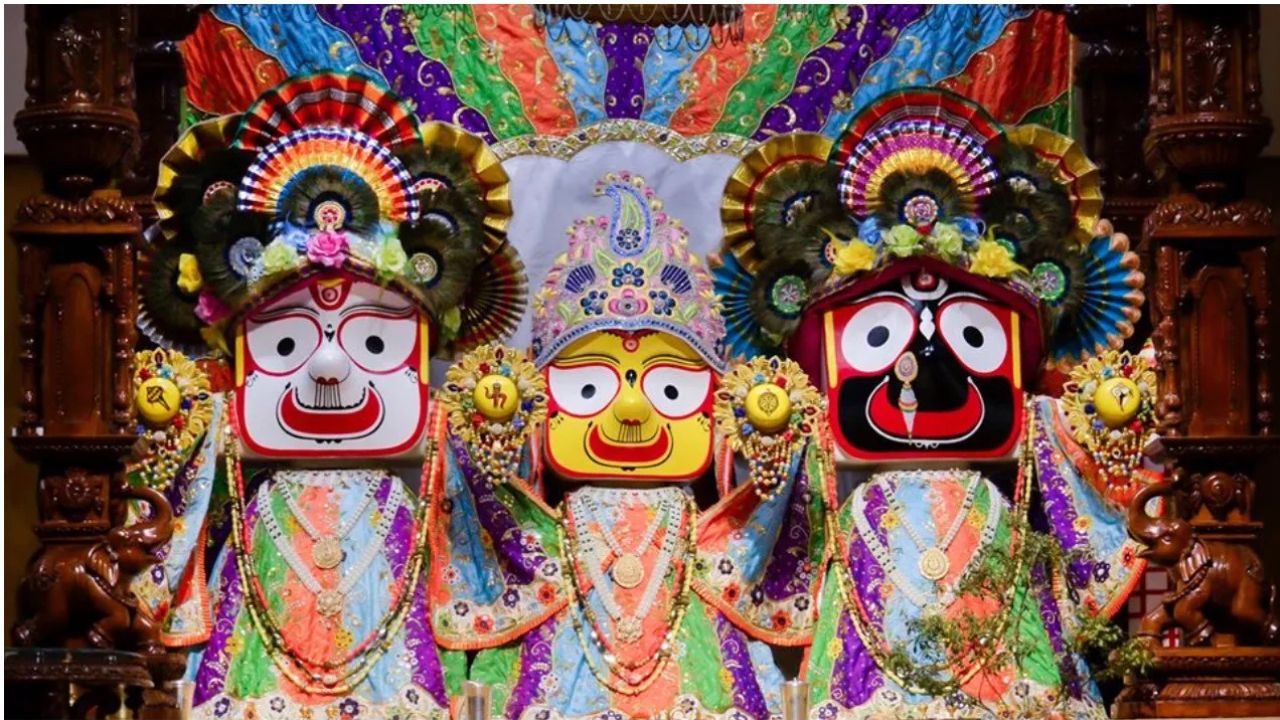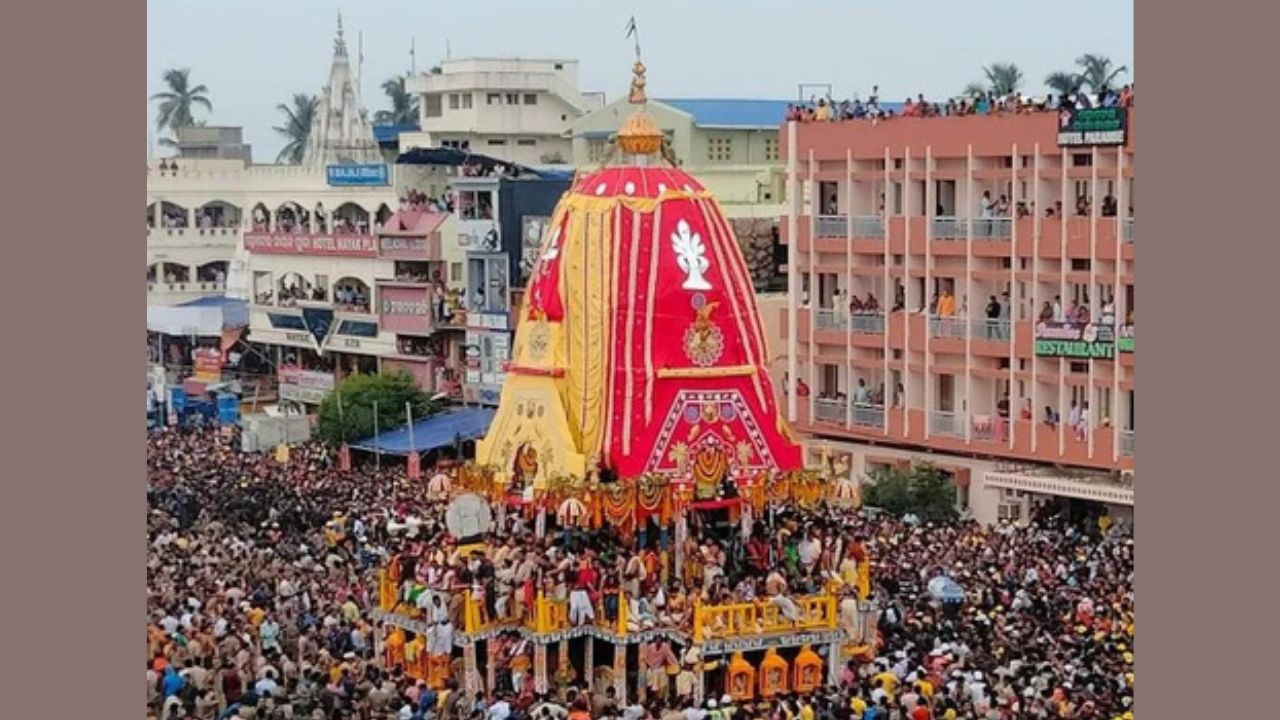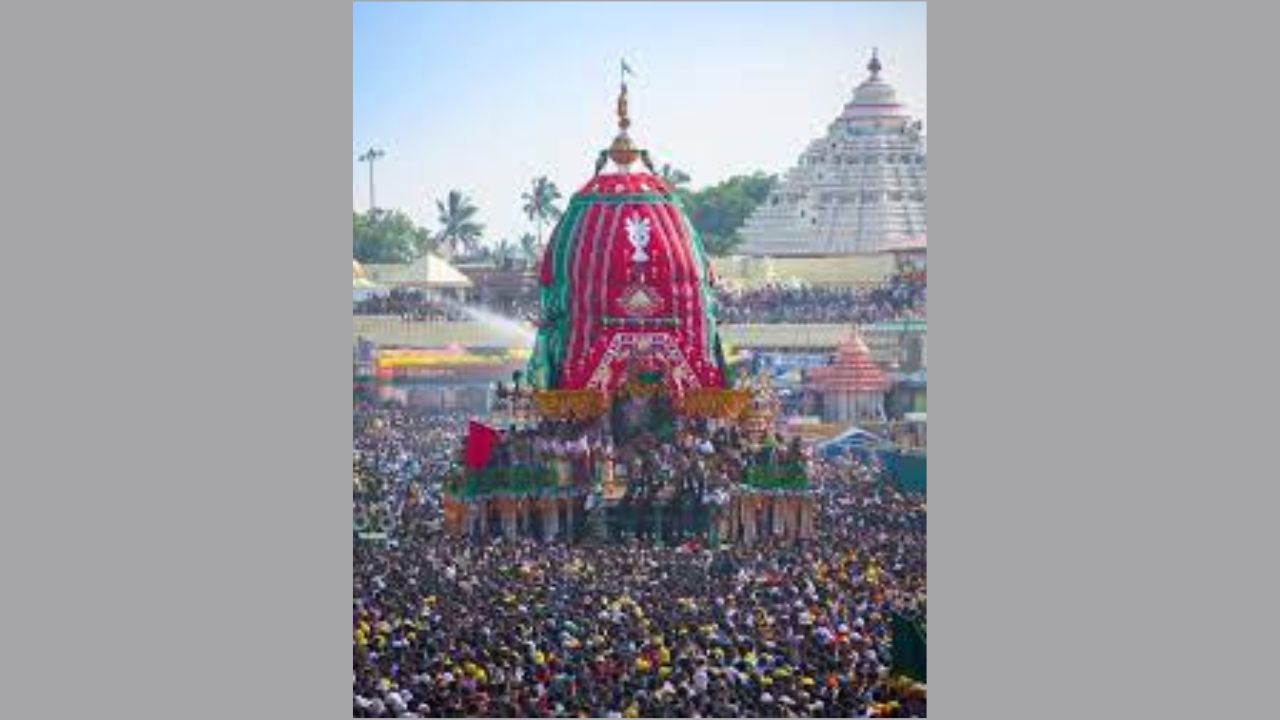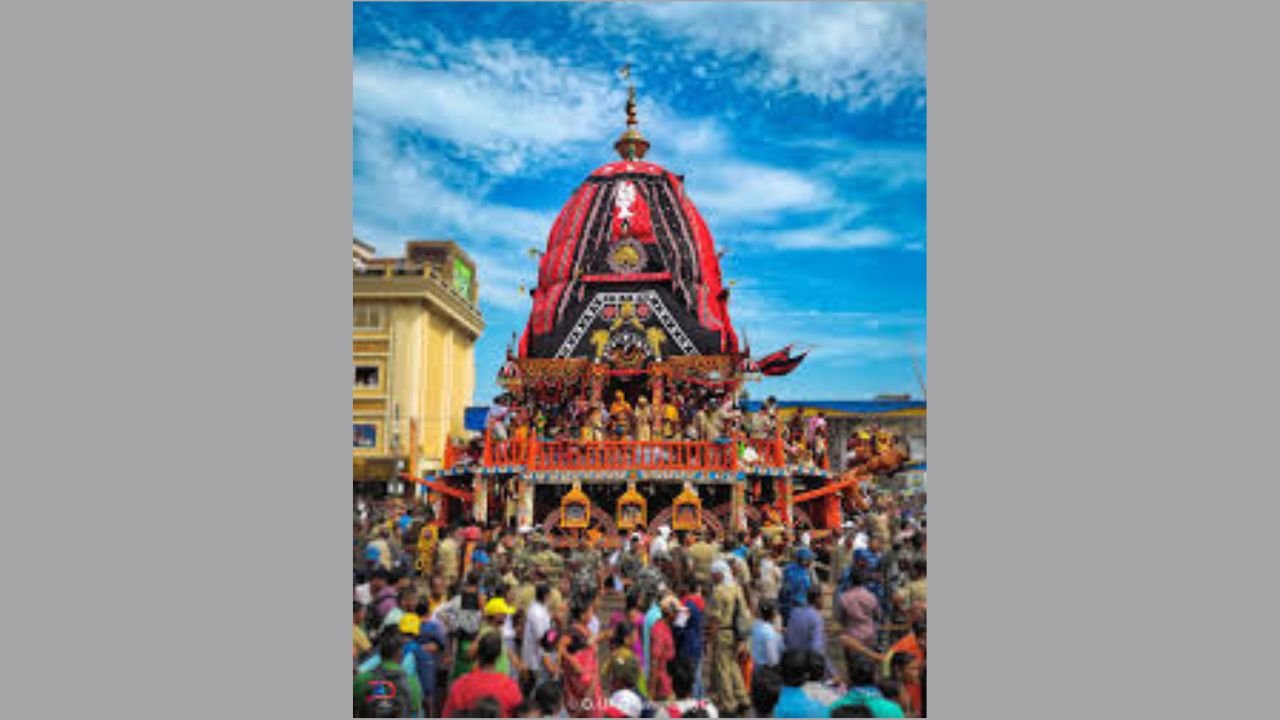 English
English

The nine-day celebration kicks off tomorrow on Friday with Rath Yatra and will conclude with Niladri Bijay on 5 July.

Jagannath (L), Subhadra and Balabhadra
Puri: The Jagannatha Rath Yatra will be celebrated on Friday, 27 June with three deity chariots carrying the deities of Lord Jagannath, Balabhadra, and Subhadra.
Each deity has a designated chariot: Nandighosha for Jagannath, Taladhwaja for Balabhadra, and Darpadalana for Subhadra.

Nandighosha
Nandighosha for Jagannath
Nandighosha is the name of Lord Jagannath's chariot. It is a massive structure, standing at 45 feet tall and 45 feet square at the wheel level. The chariot is known for its vibrant red and yellow cloth covering and features 16 wheels. It is constructed using 832 pieces of wood.
Nandighosha is adorned with a yellow and red canopy, symbolizing Lord Jagannath, who is also known as Pitambara.
Key Elements:
Nandighosha has 16 wheels, each with a diameter of seven feet. The charioteer, known as Daruka, is made of wood.
The four horses attached to the chariot are white and named Samkha, Rochica, Mochica, and Jwalani.
The flag on the chariot is called Trailokyamohini.
Significance:
Nandighosha is the largest of the three chariots. It is believed that devotees who have darshan of Lord Jagannath on Nandighosha attain Sajujya Mukti, liberation by merging with the Lord.
Other Names:
Nandighosha is also known by other names, including Garudadhwaja and Kapidhwaja.

Taladhwaja
Taladhwaja for Balabhadra
Taladhwaja is the name of the chariot of Lord Balabhadra, elder brother of Lord Jagannath.
The Taladhwaja chariot is known for its green and red cloth covering, a palm tree symbol on its flag (dhwaja), and its 14 wheels, each approximately 6 feet in diameter.
Key Features of Taladhwaja:
Height: Taladhwaja stands about 44 feet tall.
Divine Charioteer: Matali is the divine charioteer who guides the chariot.
Guards: Narasimha and Ganesha are placed on the chariot to bless and protect the journey.
Significance: It is believed that having darshan of Lord Balabhadra on Taladhwaja can help devotees overcome obstacles in life.

Darpadalana
Darpadalana for Subhadra
Darpadalana, also known as Devadalana or Padmadhvaja, is the chariot of Devi Subhadra.
It translates to "crusher of pride" and is a symbol of Subhadra's grace and compassion.
The chariot is 43 feet high, with 12 wheels, each 7 feet in diameter and is adorned with black and red fabrics, representing Shakti and protection.
Name and Meaning: Darpadalana, meaning "crusher of pride," signifies Subhadra's humility and compassion.
Position: During the Rath Yatra, Darpadalana is positioned between the chariots of Lord Balabhadra (Taladhwaja) and Lord Jagannath (Nandighosa).
Charioteer: Arjuna, the Pandava brother, is the charioteer for Subhadra's chariot.
Horses: The four horses pulling Darpadalana are named Rochika, Mochika, Jita, and Aparajita, all colored red.
Guardian Deity: Jayadurga is the guardian deity of Darpadalana.
Symbolism: The chariot represents the divine feminine energy, grace, wisdom, and strength.
Significance: It is believed that Subhadra's presence on Darpadalana blesses devotees with strength and peace.
These chariots are massive, wooden structures, elaborately decorated and pulled by devotees during the procession.
These chariots are made completely by hand from 5 types of special wood. No scale is used to measure the wood, rather chariots 45 feet high and weighing more than 200 tons are prepared by measuring with a stick.
New chariots are made every year. They start from Akshaya Tritiya and the chariots are ready two days before the Gundicha Yatra. After the Yatra is over, the chariots are dismantled.
The nine-day celebration kicks off with Rath Yatra and will conclude with Niladri Bijay on 5 July.
Significance of Jagannath Rath Yatra
The Jagannath Rath Yatra, believed to have originated between the 12th and 16th centuries, is rooted in mythology and history. While some say it marks Lord Krishna’s visit to his mother’s home, others link it to King Indradyumna.
No related posts found.